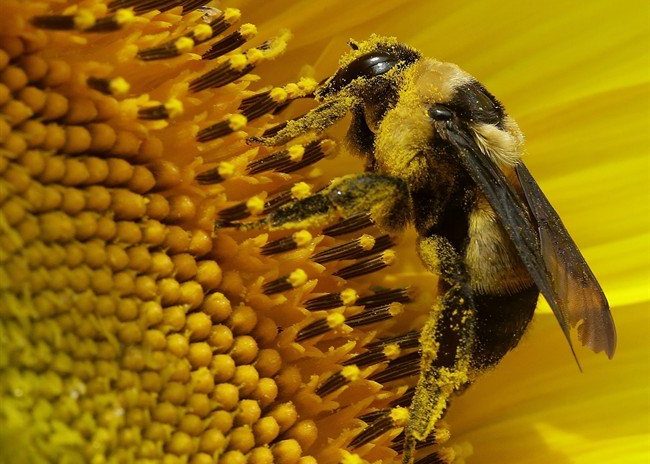Bees serve as important factors in the province’s ecosystem, helping pollinate and produce honey across Alberta. However, this year, officials fear the bee population will see a drastic decline.

“That’s anywhere from a 20 per cent loss in some areas to 90 per cent in others.”
Phillips said a colder than usual spring is one contributing factor to declining bee populations across the province.
“It was a fairly mild winter, however, as we got into April, there were a couple of cold weeks, that was hard on some of the bees,” she said.
“This industry is very seasonal, it kicks off in March and wraps up in about October — once it gets too cold for the bees to be out.”
However, cold weather isn’t the only straining factor on the province’s treasured population. She added the COVID-19 pandemic also caused havoc on the industry.
“The pandemic has created some additional factors that created additional stressors,” she said. “One of those is the late arrival of skilled workers coming in from different countries, like Mexico, Nicaragua and the Philippines.

Get daily National news
“Beekeepers will need help and support in the early part of the season to feed the bees as they’re coming out of their hive when the weather warms up.”
Phillips said the province was able to acquire some help from skilled workers, but a late start to the season can have a lasting impact on bee populations moving forward.
“We did get some workers to come in, the challenge is that most of them came in quite late, and then once they got here, just like everyone else, they had to do the mandatory 14-day isolation,” she said. “So a lot of workers weren’t getting out into the field until early May — that’s already six weeks into a very short season.”

Alberta is home to the largest beekeeping jurisdiction in Canada, Phillips noted, but this year, the province is expecting to take a significant hit not only to the number of hives, but also to the amount of honey produced.
“A honey bee colony will produce anywhere from 150 to just over 200 pounds of honey per each hive annually. So if we’re down, say maybe 50,000 hives, it would be that kind of a reduction in honey production,” she said.
“The build-up of replacing the lost bees, or the lost number of colonies, will probably take about two to three years to catch back up to where we were,” Phillips said.
In early June, the provincial government announced new measures to help beekeepers in Alberta deal with this year’s shortage, by announcing a new Canadian Agricultural Partnership program.
The program will provide workers with $1 million to offset the costs of increased colony replacements amid the pandemic.
“This new program will keep our bee industry competitive after this difficult year.”
The program will be available to all 182 commercial beekeepers in Alberta this summer and will be retroactive to also cover issues faced in spring 2020.
Alongside support from the government, Phillips said there are steps residents can take to help increase pollination in Alberta.
“It’s always good to have a pollinator in your yard if you can,” she said. “If you plant flowers around the edge of your yard, that’s always helpful to bring bees in, and it’s always good forage.”
Phillips added that people can visit pollinator.org to find out the best way they can help bees thrive in their geographic areas.


Comments